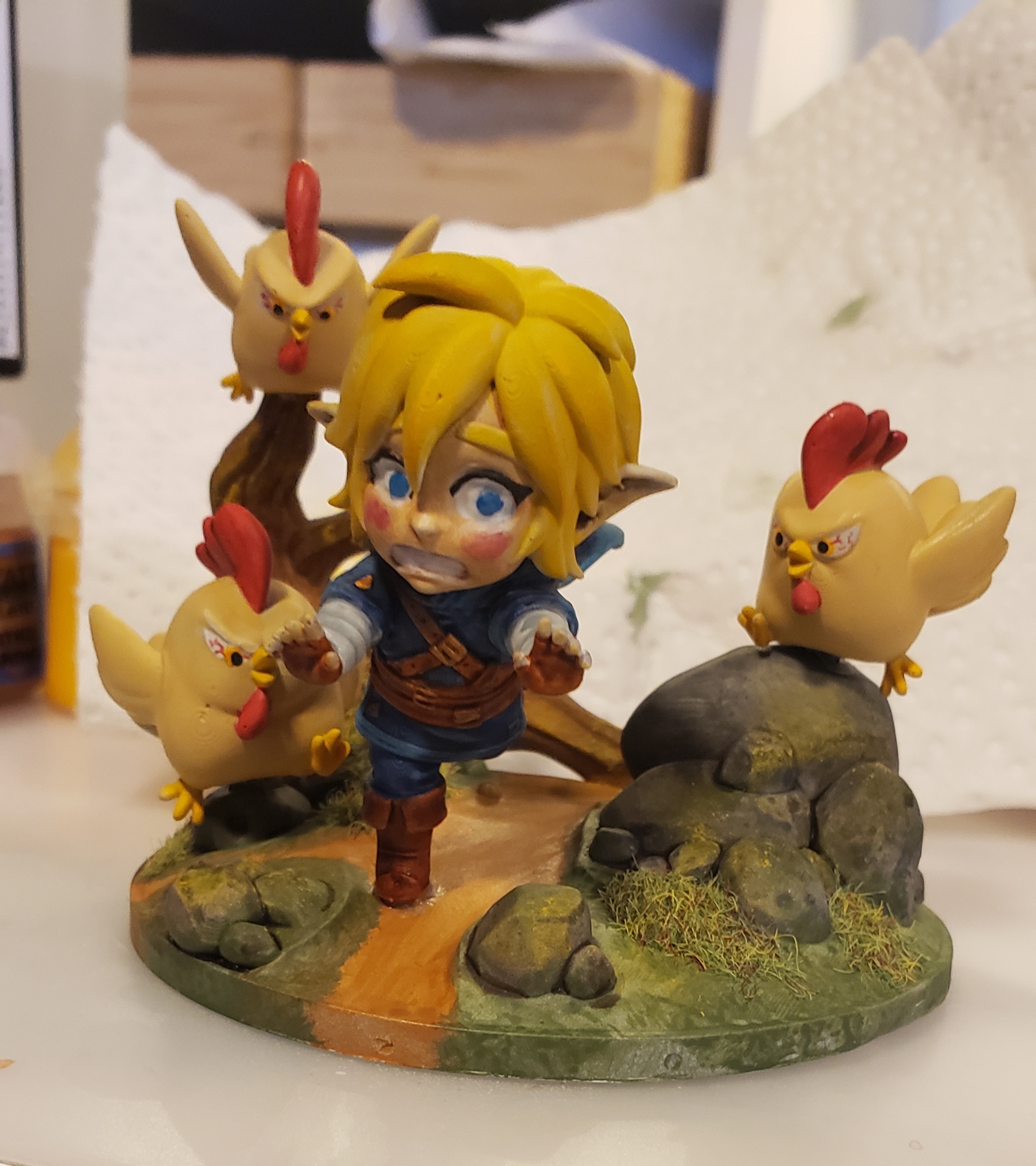I’m looking for a better knife sharpener for my hard steel chef knife. I think whetstones are the way to go, but most of the sets I see are 4 double sided stones. Do I need that many stones?
Is there a totally different type of sharpener that you have had success with?
Edit: I should add that I like my knife very sharp, and I have a few tiny chips in the cutting edge from a cheap drag-through sharpener.
There are lots of great choices. I personally like natural oil stones. For rough work I will go with india stones, then fine Arkansas stones for the finish. Others like waterstones but I find water messier as the stones need to soak (not all do, but some do). I find diamond stones are too course but maybe the ultra fine grades are good. Sand paper works well at 1000 and 2000 grit but gets expensive fast as the paper wears out fast.
all of the above work though despite what preferences. you will not go to hell or something for a wrong choice. In the end try soemthing and if it doesn’t work for you try something else.
i do have some stones that won’t sharpen my exotic wood working blades, but a kitchen knife won’t be made of those.
Get a shapton 1000 grit ceramic whetstone, they’re excellent and not terribly expensive.
Those 4 sided ones are neat and all, but a decent stone will give you a better edge especially if you combine it with stropping.
I hate to suggest r*ddit, but r/sharpening was pretty good
Get a honing steel if you don’t already have one to help maintain the edge as you use the blade too, I keep one in the kitchen.
YouTube would probably be another place with good sharpening tutorials but you really just need a stone or two, an old leather belt to use as a strop, some stropping paste, and a honing steel. Shouldn’t cost more than $50-60 total.
The stones eventually wear down of course, but they’ll last a good while and you can flatten them when they start to dish.
Also, I specifically made this post to avoid searching reddit, haha!
I wonder if there’s a sharpening community on Lemmy or magazine on Mbin/Kbin…
Usernameblankface@lemmy.world, there’s !pocketknife@lemmy.world (aka https://lemmy.world/c/pocketknife). It’s not super duper active, but some of the regulars there might have whetstone recommendations for you.
If you find one, please share a link under this post.
I do have a honing steel! I’d be glad to use one stone with two sides instead of those stacks. How do I know if a stropping paste is good? A certain ingredient? A brand?
I’ve never really given that any thought lol, I couldn’t even tell you the brand I have, I just looked up “stropping paste”. It’s some green stuff that came in a white capsule.
I have nothing to add but I want to know this too . Been thinking of getting one for my good knives
Wow, I just got and used a whetstone for the first time yesterday!
I’ll tell you what I did, with the understanding that I’m less knowledgeable than others in this post, but can probably better relate to your situation.
I’d also be happy to hear feedback from others.
I bought a dual King whetstone of 1000/6000 grit for a basic German knife that lost its edge after a few months of daily use. The 6000 side is probably overkill (King is made for Japanese knifes, which do require 6000 grit. 2000-4000 would do for a German knife), but the whetstone was at the correct balance of price, apparent quality and known brand.
I mainly used these two videos as guides:
https://www.youtube.com/watch?v=TkzG4giI8To
https://www.youtube.com/watch?v=tahaaHxhbsA
Using a marker to see if I’m holding the knife at the correct angle helped, thought I mostly used it to get my bearings. I didn’t bother with the whole 10, 8, 6 etc. stropping process, rather went a few times on each side, and tested it until the knife was able to cut through paper easily. Overall, I’d say it took me less than 10 passes on each side.
The main issue for me was forcing myself to hold the knife correctly and move my other hand to apply pressure at the right point (I was able to do it correctly, it just took a bit of work). I also had a hard time keeping the angle of the knife constant.
The whole process start to finish took me about half an hour, I’d say about 5-10 minutes were due to me being a noob.
When inspecting the edge, I noticed it was convex, which makes sense as the angle wasn’t uniform. From what I understand, this might actually be better than a straight V edge (the most common type), so… yay for me, I guess?
After finishing the knife easily passed the paper test, and cutting through a tomato was more a matter of placing the knife on top of the tomato and sliding it back and forth, allowing the edge to drop down and slice it. The knife is at least as sharp as when it was new, if not sharper. There is one spot where I think the edge isn’t as good, but I only noticed it because I was looking for issues and it isn’t noticeable with regular use. Overall I’m very happy with the results.
The dual grit Kings are very good, been using that same 1000/6000 for years.
I have a 1000 and a 4000 in fine water stones.
I have a decent strop. I have a decent steel.
Once the edge is on it, this is all I need.
Note, I also have some very coarse stones and some finer grits as well. I use them to either change the edge in a knife entirely, or you know? Get crazy sharp sometimes with a polished fine edge. Getting crazy sharp never lasts in the kitchen for long though. I’m talking my crazy, everyone thinks my knives are normally razors anyway and I rarely go higher than 4000 grit.
It sounds like you have had success in buying the different grits separately rather than a stack of stones.
Ya. Water stones, imo, demand quality.
However, you can get a hunting knife razor sharp using that crappy little grey stone that came with it, and some spit.
Waaay nicer using quality though.
It’s a shame the r/sharpening community moved to discord for the most part.
That being said, the average person, with the average knife, only needs one stone in the 1k range. Anything else is personal preference, or window dressing.
The general consensus is to use what’s called a “splash and go” stone. Shapton, particularly their “glass” stones, is one of the more popular brands. Water stones, as opposed to oil stones, tend to be a fairly gentle learning curve. You do eventually have to flatten them, which isn’t difficult, but by the time that happens, you’ll likely have picked up enough skill to have a better idea of what you’ll want, so don’t jump into that yet. No need to buy up all kinds of stuff to get started. Hell, it’s better to only get one stone and nothing else to get started.
But avoid the double sided, at least for now. They can be a pain in the ass over time. Just get one good stone and practice as you use your knives.
Now, if the chipping is bad, you might need to find someone local that does hand sharpening to grind those out, but minor chips and dings come out fine over time. But never, ever machine grind a good knife, and definitely never trust anyone that claims you should let them do so unless you know for a fact they use a water cooled device. Seriously, just don’t.
Grinding out heavy chips is a bit more difficult, so it takes more experience to do right on a good knife. You don’t want that to be your first project. A cheap knife, that’s fine, nobody really cares if they screw a cheap knife up while learning. But minor chips, say something under an 1/8 inch at the biggest, you just sharpen and let the chip get eaten away as you go. You waste more metal than necessary otherwise.
The exception to that is something that you’ll be using for professional cooking. And it would need to be pretty fancy restaurant cooking at that, where perfect presentation is mandatory. Little chips won’t show up in the results for a home cook. Being real, even fancy chefs usually can’t see the difference, but they’ll freak out despite that. Only time I’ve ever had a chip that small be a problem was doing food carving. And you ain’t doing that with a bigger knife, it’s kinda specialized.
One stone. Practice developing a burr on the blade, and removing that burr via the stone itself. That’s it, that’s the recipe to a very sharp knife. You don’t need high grits, you don’t need some kind of magic guide or whatever. Just your hands, one stone, and a knife.
If you are looking for something to help you get a perfect edge I have been using an Edgepro Apex sharpening system for years and it produces an amazing result. You can pick the stones you want and there are even some aftermarket options available. The benefit of this system is that once you pick your desired sharpening angle, the system will keep that angle consistent across the knife edge. I really like mine. They also just released an updated version called the bevel tech with some upgrades/improvements. They also let you send in a knife for them to sharpen to test out the quality of the results.
I use different things for different edges.
Most of my hard working tools end up with a convex edge, I like them better for chopping stuff like wood and asklemmy posters bones and its good durability doing so.
So that’s either automotive sandpaper in various grits, or 3M’s paperless abrasive sheets (easier on curvy stuff). Slap a thin foam sheet or two on your work surface, choose your paper grit, work it, change to a figer grit, repeat until happy.
What I like about those is they’re huge and easily replaced. I’ve done flat edges with them too by simply not using the foam.For more traditional flat edges, I’ve mostly been using a pair of DMT’s dual sided butterfly thingies, so that’s indeed 4 different grits. That’s what I use because that’s what I got ages ago and got used to them. They’re ok. Nothing amazing, but it works and it’s small enough to sit in the kitchen drawer.
I also have a fancy kit that clamps on the blade with a metal arm that keep the tiny stone a the same angle and whatnot but it’s kinda annoying to setup.
It’s probably more consistent than anything I do by hand, but I never bother using it because it’s clunky.In the end, whatever you actually use is gonna be better than anything that sits in storage.
About these Lemmy poster bones.
Do you make stock with them?
Do you use the stock to finish a nice shit poster paella?
What’s for dessert?
First, avoid Amazon. All the stones on there are scams, if you contact the manufacturer you’ll see that these stones are less than a dollar in bulk.
I sharpen tons of knives and tools, so I use around 5 or 6 stones, but if you are looking just to sharpen your knives, you only need 2, and a strop.
I’d say most people only need a 1000 grit stone, especially if they have a strop. I’ve been using a naniwa lobster for a while. Even though the aluminum oxide abrasive is not very aggressive, and slow on very hard steels, it leaves a very keen edge. After some stropping you will have a razor sharp edge if done correctly.
Of course there are many other options for good stones, shapton’s korumaku series, shapton’s glass series, naniwa chosera/professional series, king (in general).
Aside from water stones, diamonds are also popular. In my personal, unpopular, opinion, they cut so efficiently that the feedback is lacking and it’s difficult to get a crisp edge off the stone. They also don’t like abuse and can be ruined with aggressive use.
For the strop, you don’t need anything fancy. You also don’t need compound either, though I usually use natural stone powder.
I only use stones for wood chisels. I find that level of edge is not particularly useful for kitchenware. I just use a set of cheap diamond blocks from AliEx ages ago. They are like 480/800/1200/3000 IIRC. I don’t use the 480 for kitchen knives. 3k is already close to passively dangerous level sharp. I have stones up to 8k, but the edge doesn’t last as long as a 3k, and the extra effort has no benefit for me.
I have some better quality kitchen knives I like keeping sharp.
I use a two-sided whetstone 400/2000 grit for basic shaping (400 is akin to those rolling sharpeners, to be used only when you fucked up real bad), a leather strop with green sharpening paste (~6000-8000 grit) glued to a piece of wood, a plain leather strop, and a honing steel.
Green sharpening paste is most of what I ever use, a couple of strokes weekly (more realistically about 20 once a month), and maybe polish it up with the plain leather strop. Keeps the knives wicked sharp, and then I just hone them after each use.
Sometimes I do stupid things and get burrs in my edge (like cleaving frozen bone), that’s where the 2000 grit saves me.
400 I guess is for when the apocalypse comes or your kids decided to practice chef’s knife throwing into scrap metal. It’s nice to know I can remake a whole edge, but rarely used.
Check out OUTDOORS55’s YouTube channel.
Thanks, I’ll check him out
Also check out ProjectFarm. He did a few videos on sharpeners and comparing their performance and in relation to their prices.
https://m.youtube.com/watch?v=I9Lu71ewVSw
Not stones, but I’ve been very happy with this after watching a crap ton of reviews.
Work Sharp Precision Adjust Elite: https://a.co/d/ewrglgp
I use it with some Shun kitchen knives.
I have two DMT diamond stones in coarse and fine. They both do the trick and can be run wet or dry. I also have a set of cheap Chinese “whetstones” from Amazon. Gotta say that both sets are able to sharpen my knives. The diamond stones I find way easier to use and a lot cleaner.
The diamond ones do catch my eye. How are they cleaner, exactly?
Cleaner in the sense you don’t have the whetstones forming a slurry on top while sharpening as cheap stones tend to do. A slightly damp paper towel will clean off any metal shavings if the diamond stone is used dry. I don’t think this is a problem with high quality whetstones.
I think most general use kitchen knives are fine being maintained with a honing steel, usually sharpening with a whetstone is for when the edge is genuinely damaged. If you own quality knives the manufacturer should have re-edging services. I’d just send them off to get fixed and learn proper honing steel techniques rather than going overboard with whetstones—more likely you’ll just further fuck up your blade.









